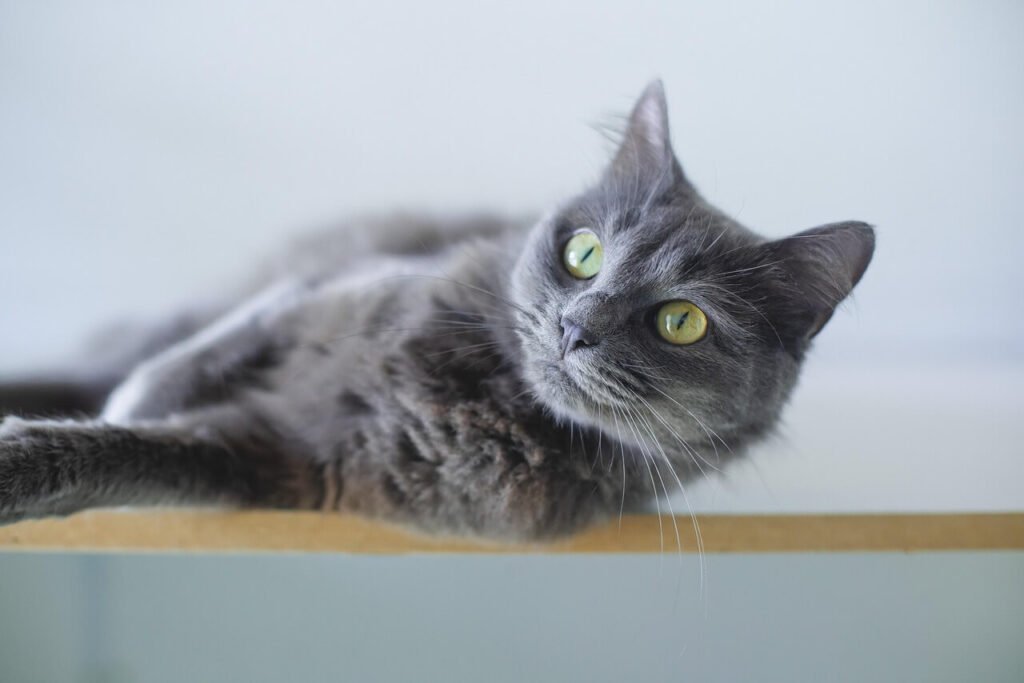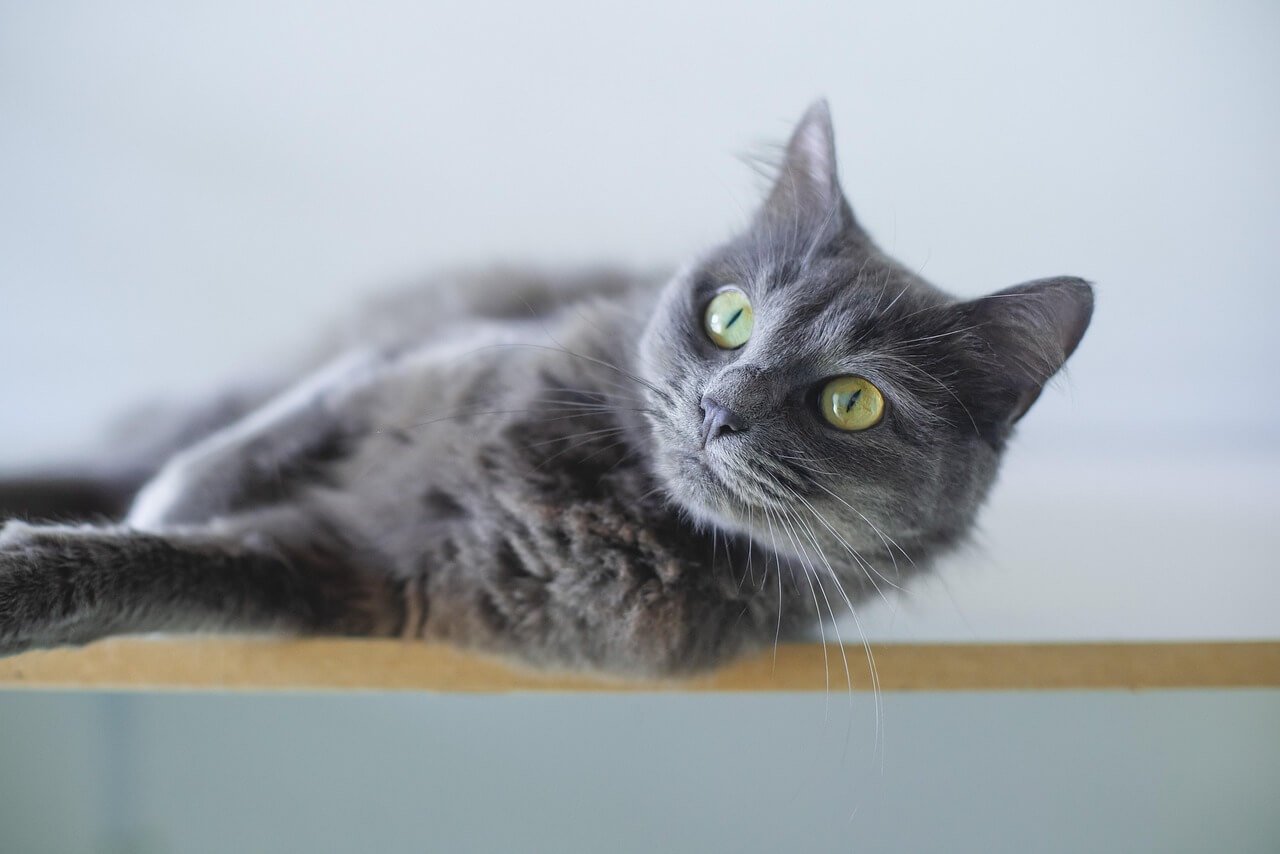Cat Vision vs Dog Vision: Unveiling the Differences
Cats and dogs are two of humanity’s most beloved companions, but their ways of seeing the world are vastly different. While both species rely heavily on their senses to navigate their environment, their vision plays a unique role in how they perceive and interact with the world around them. Understanding the differences between cat vision and dog vision not only satisfies our curiosity but also helps us create environments that cater to their needs.
In this blog post, we’ll explore the fascinating distinctions between these two animals’ visual capabilities, from color perception to night vision. Whether you’re a pet owner, an animal enthusiast, or simply curious, this guide will shed light on the remarkable ways cats and dogs see the world.
How Cats See the World: Key Features of Cat Vision
Cats are known for their exceptional ability to navigate dimly lit spaces, but their vision has many other intriguing aspects. Here’s a breakdown of what makes cat vision unique:
Superior Night Vision
Cats have up to seven times more rod cells in their retinas than humans, allowing them to see exceptionally well in low-light conditions.Limited Color Perception
While cats can see some colors, their vision is limited to shades of blue and green, making their world less vibrant than ours.Wide Field of View
Cats have a field of view of about 200 degrees, compared to humans’ 180 degrees, giving them excellent peripheral vision.Reduced Depth Perception
Their eyes are positioned slightly differently than humans’, which can make judging distances more challenging for them.High Sensitivity to Motion
Cats excel at detecting even the slightest movements, a skill honed by their predatory instincts.
These features highlight why cats are such skilled hunters and nocturnal explorers. Their vision is perfectly adapted to their natural behaviors, even if it differs significantly from human sight.
How Dogs See the World: Key Features of Dog Vision
Dogs may not have the same reputation for night vision as cats, but their visual abilities are equally fascinating and suited to their lifestyle. Here’s what sets dog vision apart:
Moderate Night Vision
Dogs have more rod cells than humans but fewer than cats, giving them decent low-light vision without matching feline prowess.Colorblind to Reds and Oranges
Dogs primarily see shades of blue and yellow, meaning their world lacks the reds and oranges visible to humans.Narrower Field of View
With a field of view of approximately 240 degrees, dogs have slightly better peripheral vision than humans but less than cats.Enhanced Motion Detection
Like cats, dogs are highly sensitive to movement, which aids them in tracking prey or playing fetch.Shorter Range of Focus
Dogs struggle to focus on objects closer than 12 inches, relying more on their sense of smell for close-range exploration.
These characteristics reflect a visual system optimized for survival and companionship. While dogs may not see the world as vividly as humans, their vision complements their other heightened senses beautifully.
Check this guide 👉Cat Vision vs Human Vision: Best 7 Expert Tips!
Check this guide 👉Cat Eye Discharge Green: Best 7 Health Tips!

Cat Vision | Dog Vision |
|---|---|
Superior night vision | Moderate night vision |
Sees blues and greens | Sees blues and yellows |
Wide field of view (200 degrees) | Slightly wider field of view (240 degrees) |
Reduced depth perception | Shorter range of focus |
High sensitivity to motion | Enhanced motion detection |
Similarities Between Cat Vision and Dog Vision
Despite their differences, cats and dogs share several similarities in how they perceive the world. These commonalities stem from their shared evolutionary traits as predators. Here’s what they have in common:
Dichromatic Color Vision
Both cats and dogs are dichromats, meaning they see fewer colors than humans, who are trichromats.Reliance on Rod Cells
Both species have a higher proportion of rod cells in their retinas, prioritizing low-light vision over color richness.Poor Close-Up Vision
Neither cats nor dogs can focus well on objects very close to their faces, relying instead on other senses like smell or touch.Motion Detection Skills
Both animals excel at detecting fast-moving objects, a trait essential for hunting and play.Adaptation to Low Light
Cats and dogs are both far better equipped than humans to see in dim lighting, thanks to their specialized retinal structures.
These shared traits underscore the evolutionary adaptations that make cats and dogs adept at surviving and thriving in diverse environments.
Practical Implications of Cat and Dog Vision for Pet Owners
Understanding the differences between cat vision and dog vision can help pet owners create environments that cater to their pets’ needs. Here are some practical tips based on their visual capabilities:
Provide Safe Spaces for Cats
Cats rely on their wide field of view and motion detection, so ensure they have vertical spaces like shelves or cat trees to observe their surroundings safely.Use Bright Toys for Dogs
Since dogs see blues and yellows best, choose toys in these colors to keep them engaged during playtime.Minimize Sudden Movements
Both cats and dogs are sensitive to motion, so avoid startling them with abrupt gestures or actions.Optimize Lighting for Cats
Ensure your home has adequate dim lighting for cats, as they prefer lower light levels for comfort.Create Stimulating Environments
Incorporate interactive toys and activities that appeal to their motion-detection skills, keeping both cats and dogs mentally stimulated.
By tailoring your home and routines to their visual strengths, you can enhance your pets’ quality of life and strengthen your bond with them.
Fun Facts About Cat Vision
Cat vision is full of fascinating quirks that highlight their evolutionary adaptations. Here are some intriguing facts about how cats see the world:
Eyes That Glow in the Dark
The tapetum lucidum, a reflective layer behind the retina, gives cats’ eyes their characteristic glow and enhances their night vision.Vertical Slit Pupils
Cats’ pupils can expand and contract rapidly, allowing them to adjust to changes in light levels with precision.Blind Spot for Close Objects
Cats have a blind spot for objects closer than 12 inches, relying on their whiskers and sense of touch for close-range exploration.Better Peripheral Vision
Their wide field of view helps them detect predators or prey approaching from the sides without turning their heads.Vision Tailored for Hunting
Cats’ visual system prioritizes motion detection and low-light visibility, making them efficient nocturnal hunters.
These fun facts reveal just how specialized cat vision is, perfectly suited to their roles as both predators and companions. Their unique way of seeing the world is a testament to their incredible adaptability.
Fun Facts About Dog Vision
Dog vision is equally fascinating, with features that reflect their social and active lifestyles. Here are some interesting tidbits about how dogs perceive their surroundings:
Blue and Yellow World
Dogs see the world in shades of blue and yellow, meaning red toys may appear gray or dull to them.Eyes Positioned for Depth
Their forward-facing eyes provide better binocular vision, aiding in tasks like tracking moving objects.Less Clarity at Close Range
Dogs struggle to focus on objects very close to their faces, relying more on their sense of smell for nearby exploration.Adapted for Action
Dogs’ vision is optimized for detecting movement, which aligns with their playful and energetic nature.Night Vision Without Compromise
While not as advanced as cats’, their night vision is still far superior to humans’, thanks to a higher concentration of rod cells.
These facts highlight the practicality of dog vision, designed to support their roles as companions and working animals. Understanding their perspective adds depth to our appreciation of their behavior.
Myths About Cat and Dog Vision Debunked
There are several misconceptions about how cats and dogs see the world. Clearing up these myths can help us better understand their visual capabilities. Here’s what science says:
Myth: Dogs Are Completely Colorblind
Fact: Dogs can see colors, but their range is limited to blues and yellows, unlike the full spectrum visible to humans.Myth: Cats Can See in Total Darkness
Fact: Cats need at least some light to see, though their night vision is far superior to ours due to their high number of rod cells.Myth: Dogs Have Better Vision Than Cats
Fact: It depends on the context—dogs excel in motion detection and peripheral vision, while cats dominate in low-light conditions.Myth: Cats’ Eyes Glow Because They’re Supernatural
Fact: The glow is caused by the tapetum lucidum, a natural structure that reflects light to enhance night vision.Myth: Both Animals See the World Exactly Like Humans
Fact: Cats and dogs perceive colors, distances, and lighting differently, tailored to their specific needs as predators and companions.
By debunking these myths, we gain a clearer understanding of how cats and dogs truly experience the world. Their vision is a marvel of evolution, finely tuned to their unique lifestyles.
Frequently Asked Questions About Cat Vision vs Dog Vision
Can cats see in complete darkness?
No, cats cannot see in total darkness, but their superior night vision allows them to see in extremely low light.
Are dogs completely colorblind?
No, dogs are not completely colorblind—they see shades of blue and yellow, but not reds or greens.
Which animal has better vision overall?
It depends on the context. Cats have better night vision, while dogs excel in detecting motion and navigating open spaces.
Why do cats’ eyes glow in the dark?
The reflective layer behind their retina, called the tapetum lucidum, enhances their night vision by reflecting light back onto photoreceptor cells.
Do cats or dogs have better depth perception?
Neither species has excellent depth perception compared to humans, but dogs may perform slightly better due to their binocular overlap.
Celebrating the Unique Ways Cats and Dogs See the World
The differences between cat vision and dog vision remind us of the incredible diversity in how animals experience life. From the way cats navigate dimly lit rooms to how dogs track a frisbee in flight, their visual systems are finely tuned to their roles as predators, companions, and survivors. By understanding these distinctions, we can better appreciate their unique perspectives and provide environments that support their natural behaviors.
Whether you’re marveling at your cat’s glowing eyes in the dark or watching your dog chase a bright yellow ball, there’s no denying the wonder of their sensory worlds. So next time you look into your pet’s eyes, take a moment to imagine the amazing way they see you—and the world around them.
Is Greek Yogurt Good for Cats with Diarrhea? Best 7 Tips! – Discover if Greek yogurt helps, how to feed it safely, and expert advice for soothing your cat’s upset stomach.
Is Greek Yogurt Good for Dogs with Diarrhea? Best 7 Tips! – Discover how Greek yogurt can help, its benefits, risks, and expert advice for your dog’s digestive health.
Do You Have to Have Cat Insurance? Best 7 Expert Tips! – Learn if cat insurance is necessary, how it works, and expert advice to protect your pet’s health affordably.
Do You Have to Have Dog Insurance? Best 7 Expert Tips! – Explore if dog insurance is necessary, costs, coverage options, and expert advice to protect your pet’s health affordably.





